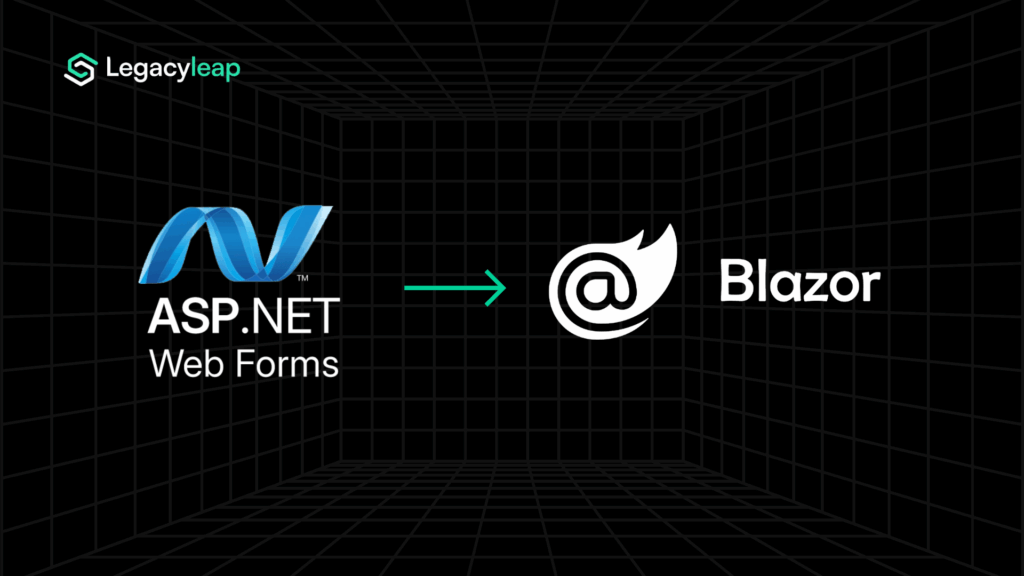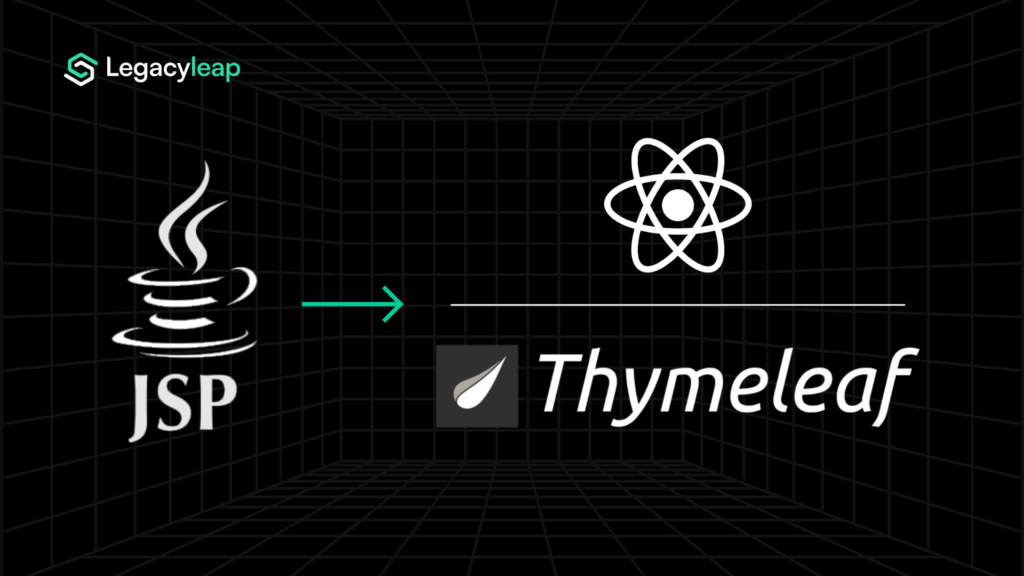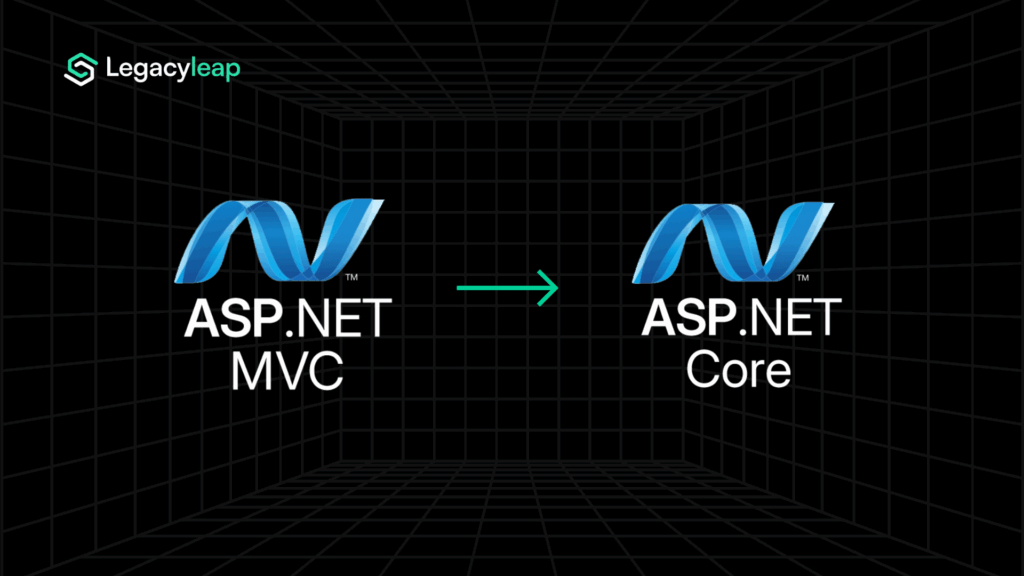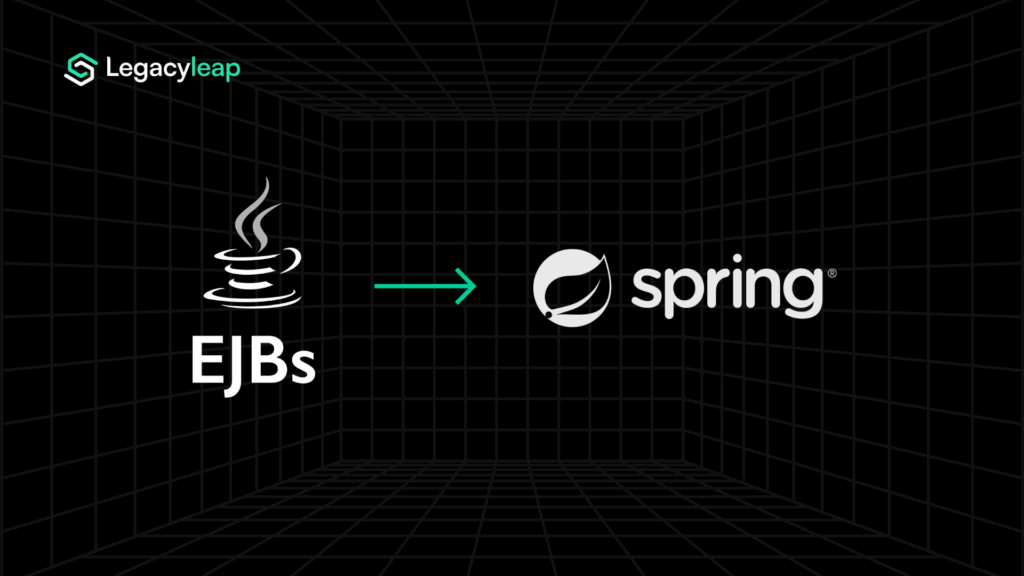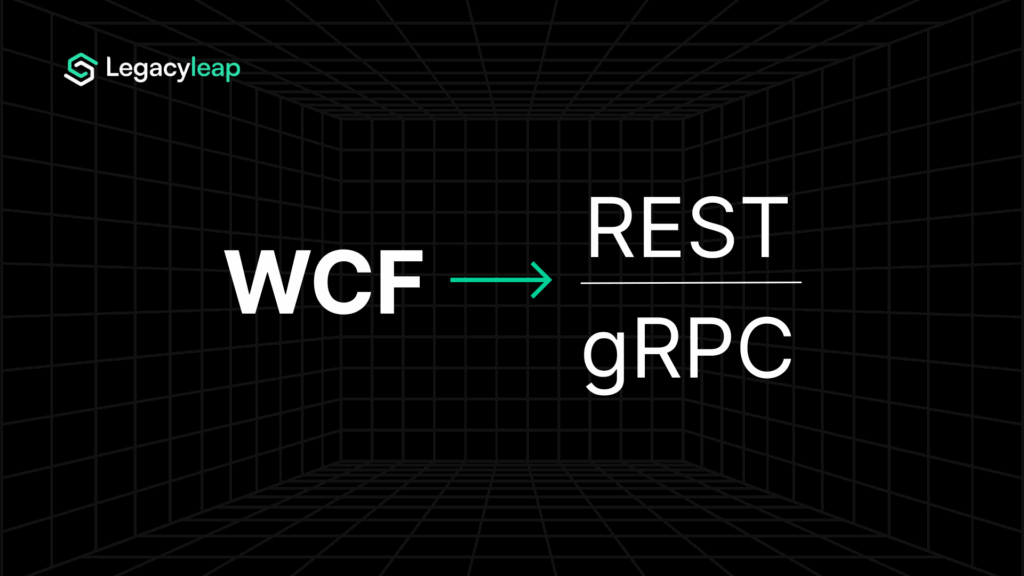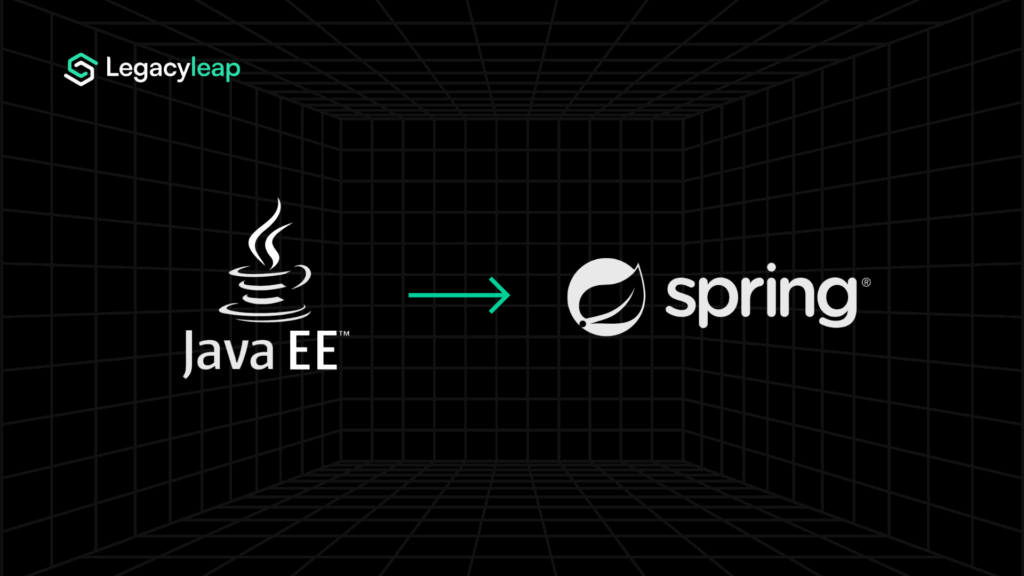Why Modernizing Legacy Applications Matters
Legacy application modernization becomes essential when rigid, bloated systems slow delivery, limit scalability, and inflate infrastructure costs. But ripping and replacing everything overnight isn’t realistic either.
That’s where refactoring and replatforming come in.
They’re two of the most-used (and most misunderstood) modernization paths. One dives into code. The other shifts the infrastructure. Both promise impact, but they serve very different goals.
This blog helps you cut through the noise, compare both approaches clearly, and choose what fits your tech stack, team, and timeline.
What is Application Refactoring?
Application refactoring improves your codebase internally without changing how the application behaves externally.
It restructures internal logic without changing how the application behaves externally. The goal? Clean, maintainable, and future-ready code, often as a precursor to cloud-native architectures like microservices or serverless.
It’s not a rewrite. It’s a strategic cleanup that improves developer velocity, reduces tech debt, and lays the foundation for long-term agility.
Teams often use application refactoring for cloud migration preparation, especially when planning to adopt containers, APIs, and DevOps pipelines.
What is Application Replatforming?
Application replatforming involves migrating your application to modern infrastructure, typically cloud, with minimal or no changes to the source code.
The aim is speed. You get off aging infrastructure, reduce ops overhead, and gain some cloud benefits (scaling, cost control, resilience) without touching core logic.
If you’re wondering what is application replatforming, it’s essentially a ‘lift and improve’ move, shifting hosting and ops without altering the application’s internal behavior.
You won’t fix bad code. But you’ll buy time, and sometimes that’s exactly what’s needed.
Refactor vs Replatform: A Side-by-Side Comparison
Here’s how application refactoring and replatforming compare across speed, complexity, ROI, and long-term flexibility.
| Criteria | Refactoring | Replatforming |
| Code Changes | Moderate to heavy — structural improvements without changing app behavior | Minimal — mostly configuration and integration updates |
| Speed to Market | Slower — requires analysis, restructuring, and validation | Faster — app stays intact while infrastructure shifts |
| Cloud-Native Readiness | High — sets the stage for microservices, containers, and API-first architectures | Partial — moves to cloud but retains monolith patterns |
| Developer Involvement | High — teams must understand and rework internal logic | Moderate — mainly infra and ops teams handle the transition |
| Flexibility Gained | High — easier to evolve, integrate, and extend post-refactor | Moderate — core limitations of the legacy codebase remain |
| Risk Level | Medium to high — deeper changes can introduce regressions | Low to medium — fewer changes, but tech debt is preserved |
| Cost Optimization | Higher long-term savings via leaner code and scalable architecture | Immediate infra savings; long-term benefits depend on further modernization |
| Maintenance Overhead | Lower — better code clarity and documentation post-refactor | Potentially unchanged — legacy pain points may persist |
| Long-Term ROI | High — positions app for sustained agility and innovation | Medium — gains stability, but limits future adaptability |
Takeaway:
Refactoring delivers deeper architectural flexibility. Replatforming gets you cloud benefits faster with fewer changes.
When to Choose What
Refactoring and replatforming aren’t competing strategies. They’re tools, each suited for different contexts. The right choice depends on where your application is today and where you want it to go next.
When to Choose Application Refactoring
Choose refactoring when:
- Technical debt is slowing development velocity, and your team spends more time fixing legacy code than delivering new features.
- Future agility is a priority where you’re planning for modularization, microservices, or frequent releases.
- You need long-term maintainability so the app can continue evolving and needs to stay reliable under change.
- You want to adopt cloud-native fully. Containers, orchestration, and DevOps workflows require cleaner code structure.
Why it works: Refactoring positions your application for scale, flexibility, and faster iteration down the line.
When to Choose Application Replatforming?
Choose replatforming when:
- Speed is critical, and you need to move off aging infrastructure, fast.
- The codebase is stable. It’s functional, well-tested, and doesn’t require major logic updates.
- You’re optimizing for cost or uptime, where hosting or resource usage is hurting your bottom line.
- You want cloud benefits without deep rework. Think autoscaling, managed services, or improved availability.
Why it works: Replatforming buys time. It gets you to the cloud faster without pulling your teams into complex code refactors.
Many teams use legacy application replatforming as a first step, then pursue refactoring once cloud operations have stabilized.
Refactoring vs Replatforming: Pros, Cons, and ROI
Refactoring and replatforming each come with trade-offs in time, complexity, risk, and long-term value. There’s no universal “better.” But there is a better fit for your situation.
| Aspect | Refactoring | Replatforming |
| Long-Term Flexibility | High — enables modularization, future scaling, and cloud-native evolution | Medium — app structure stays the same, limiting flexibility later |
| Short-Term Risk | Higher — code changes can introduce bugs or regressions | Lower — infra-focused shift reduces application-level disruption |
| Developer Productivity | Improves over time with cleaner, maintainable code | May stagnate if tech debt and complexity remain |
| Cloud Optimization | Full — enables cloud-native benefits like autoscaling and containerization | Partial — gains infra efficiency, but limits deeper cloud-native integration |
| Maintenance Overhead | Reduces after refactor due to improved structure and clarity | May persist — existing inefficiencies remain in place |
| Speed to Execute | Slower — requires deep analysis and testing | Faster — lift-and-move with minimal code intervention |
| Value Realization | Long-term — future savings and agility compound over time | Near-term — quick wins on infra cost or reliability |
Takeaway:
- Replatforming is often the fastest route to the cloud.
- Refactoring is the deeper investment that pays off in resilience, agility, and long-term efficiency.
Refactor and Replatform in the 7 R’s Landscape
Modernization isn’t a binary choice but a spectrum of strategies. Refactoring and replatforming are just two among several, each with its own level of effort and long-term impact.
Understanding where these approaches fall within the broader 7 R’s of modernization gives you context and helps avoid tunnel vision. It also shows how different paths can complement each other in a phased transformation.
The 7 R’s of Modernization
| Strategy | What it Means | Level of Change |
| Rehost | Lift-and-shift to new infrastructure | Minimal |
| Replatform | Move to a new platform with minor config or infra tweaks | Low |
| Refactor | Internal code improvements for maintainability & flexibility | Medium |
| Rearchitect | Redesign app for cloud-native patterns (e.g., microservices) | High |
| Rebuild | Rewrite from scratch with modern tech | Very High |
| Replace | Swap with an off-the-shelf product | High |
| Retire | Decommission unused/legacy components | Minimal |
Takeaway:
- Replatforming is a fast entry point to modernization and is ideal when time or budget is tight.
- Refactoring opens the door to deeper transformation and is ideal when flexibility and scale are priorities.
- Many orgs don’t choose one. They sequence several R’s over time depending on various criteria.
Decision Framework: Refactor or Replatform?
If you’re choosing between refactoring and replatforming, the best place to start is your context. Architecture decisions work best when aligned with your team’s maturity, business priorities, and the realities of your codebase.
Here’s a simple guide to help frame that choice.
Refactor if…
- You’re building for long-term agility. You’ll need frequent changes, modular services, or API integrations down the line.
- Tech debt is a drag on velocity. Development slows every time your team touches the codebase.
- Cloud-native is on the roadmap. You’re planning for containers, orchestration, or serverless.
- The app still has runway. It’s not a throwaway; it’s core to the business and will evolve.
Replatform if…
- You need a fast win. You’re facing infra cost pressure, downtime, or a tight cloud migration deadline.
- The codebase is stable. It works, it’s well-tested, and there’s no immediate need for structural changes.
- Your team lacks bandwidth. You don’t have the resources to deeply refactor… yet.
- You need to scale infra, not code. Performance is an ops problem, not a dev bottleneck.
What This Means:
- Refactoring gives you a cleaner, more resilient foundation for innovation.
- Replatforming helps you stop the bleeding — without rewriting the app.
Both have their place. The best teams often do one now and the other later.
Still unsure? Here’s a quick, real-world guide to help you make the call, based on the kinds of scenarios we see most often in the field.

Pro tip: Don’t force a binary choice. Many teams replatform first, then refactor once they’ve stabilized.
If you’re optimizing for speed and stability, start with replatforming. If you’re optimizing for flexibility and future evolution, lean into refactoring. And if you need both, sequence them.
Risks & Mitigation Strategies
Neither path is risk-free. Whether you’re changing code (refactoring) or shifting infrastructure (replatforming), things can break if not managed carefully. Here’s what to watch for and how to avoid it.
Refactoring Pitfalls
- Scope Creep: Refactoring efforts can expand fast if boundaries aren’t clearly set.
- Regression Bugs: Code changes may unintentionally alter behavior, especially without tests.
- Missing Test Coverage: Poor or outdated tests make it risky to refactor confidently.
How to Mitigate:
- Lock scope tightly with clearly defined refactoring boundaries.
- Use automated regression tests to catch behavioral changes early.
- Enforce CI/CD test gates, a core practice in safe, incremental change, as emphasized by Martin Fowler.
Replatforming Pitfalls
- Migrating Tech Debt: You move the app, but carry over the complexity.
- Platform Misfit: The app might not play well with the new environment (e.g., stateful logic in stateless infra).
- Under-leveraged Cloud Potential: You land in the cloud but gain none of its real advantages.
How to Mitigate:
- Audit dependencies and configurations pre-migration.
- Choose platforms that match your app’s workload profile.
- Plan for optimization phases post-migration.
Pro Tip:
Across both paths, you can reduce risk with:
- CI/CD pipelines for fast, safe iteration
- Observability tooling (logs, metrics, tracing)
- Automated tests to guard against regressions
How Legacyleap Helps with Refactoring
At Legacyleap, we’ve focused on refactoring not just as a technical exercise, but as a strategic unlock for future-ready architecture. Our Gen AI–powered companion platform accelerates refactoring by blending deep code analysis with automation, without cutting corners on safety or accuracy.
Here’s how we support modern refactoring efforts:
- Code Comprehension First: We map legacy logic, dependencies, and architecture using code graphs and business logic inference, even without documentation.
- Gen AI–Driven Refactoring: Our engine translates legacy code into modern stacks (e.g., VB6 to .NET, EJB to Spring) using structured transformations backed by compiler techniques and ASTs.
- Test Coverage Automation: We auto-generate test cases to preserve functionality across unit, integration, and API layers, ensuring every change is verifiable.
- Modularization & Microservices Support: We support phased refactoring, helping teams safely extract services, adopt APIs, and move toward scalable, decoupled architectures.
- Faster Timelines, Less Manual Effort: Teams report up to 70% automation in code transformation and 60–80% less manual effort, completing in 2–4 months what used to take a year.
For organizations with critical legacy systems, refactoring with Legacyleap offers a fast track to cleaner code, clearer architecture, and future-ready platforms without flying blind.
Note: While Legacyleap specializes in refactoring, we encourage teams to evaluate all modernization options based on your current constraints and long-term vision.
Wrapping Up: It’s Not a Contest, It’s a Fit
Refactoring vs. Replatforming isn’t a rivalry. It’s a choice between depth and speed.
- Refactoring is a long-term bet — clean code, improved flexibility, and better architecture.
- Replatforming is a short-term gain — quick cloud migration, reduced ops, and immediate stability.
The smartest orgs don’t pick one forever. They phase it. They refactor what matters and replatform what works. What’s important is knowing which approach aligns with your goals, team, and timeline, and having the clarity to act on it.
Want to see intelligent refactoring in action?
We’re offering to modernize one codebase at no cost as part of our product roadmap rollout.
If you’re sitting on legacy code and considering your next move, this is your chance to explore how Gen AI can accelerate the transformation, with real results, not hype.
Talk to us about your modernization goals. Let’s help you get there faster and smarter.
FAQs
No. Replatforming can move an application to cloud infrastructure, but it doesn’t make it cloud-native. True cloud-native transformation typically requires refactoring, modularizing code, decoupling services, and aligning with modern architectures like containers or serverless. Replatforming helps with lift-and-shift, but stops short of long-term agility.
Yes, but it requires careful orchestration. Some organizations replatform first for speed, then incrementally refactor services post-migration. Others take a hybrid approach by refactoring specific components while replatforming the rest. Legacyleap is purpose-built for phased refactoring and works well in tandem with broader replatform strategies.
Platforms like AWS offer services such as Elastic Beanstalk, App2Container, AWS Refactor Spaces, and Lambda to support both replatforming and microservice-based refactoring. The key is choosing services that let you isolate modules, automate deployments, and scale independently without forcing a full rewrite.
Refactoring improves code modularity, separation of concerns, and dependency clarity, making future upgrades faster and safer. It enables your system to evolve incrementally with business needs, reduces vendor lock-in, and allows easier adoption of new frameworks or cloud-native services as they emerge.
Few platforms offer both. Replatforming is often handled by cloud-native tools (like migration services or containerization utilities). Refactoring, however, requires deeper code comprehension, dependency mapping, and business logic validation. Legacyleap focuses exclusively on safe, automated refactoring using Gen AI and compiler techniques, not just infrastructure migration.


